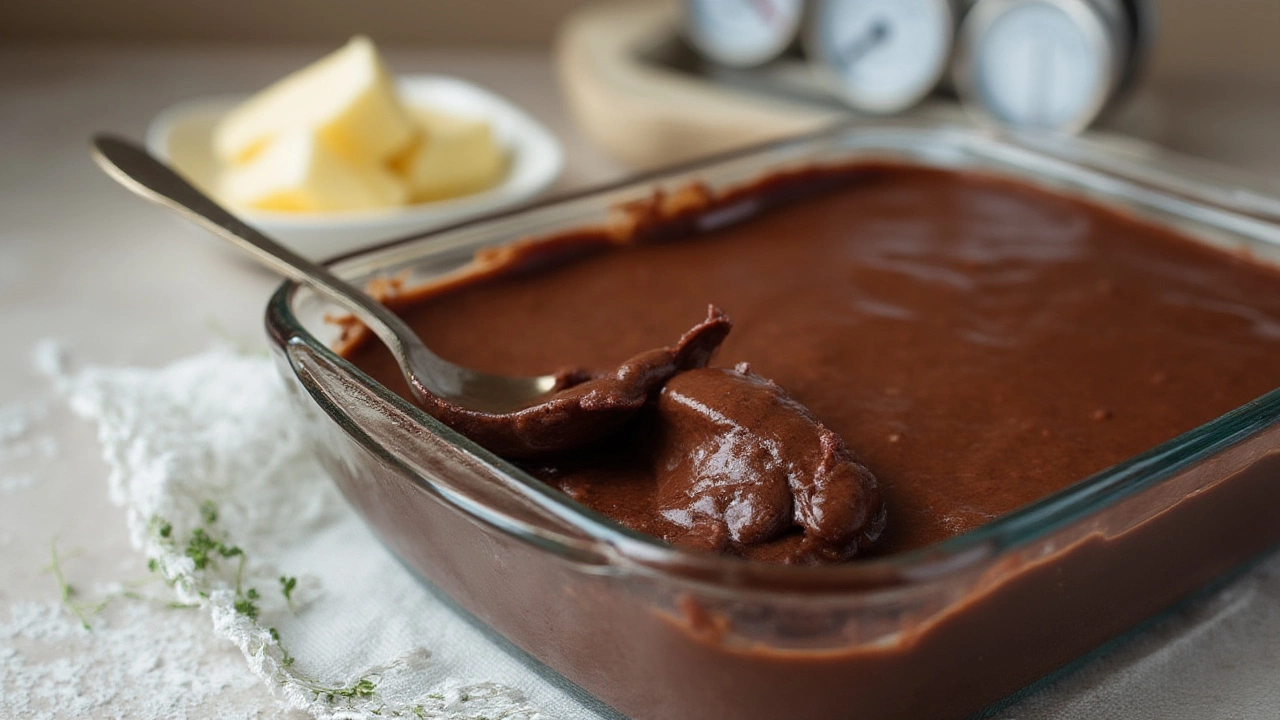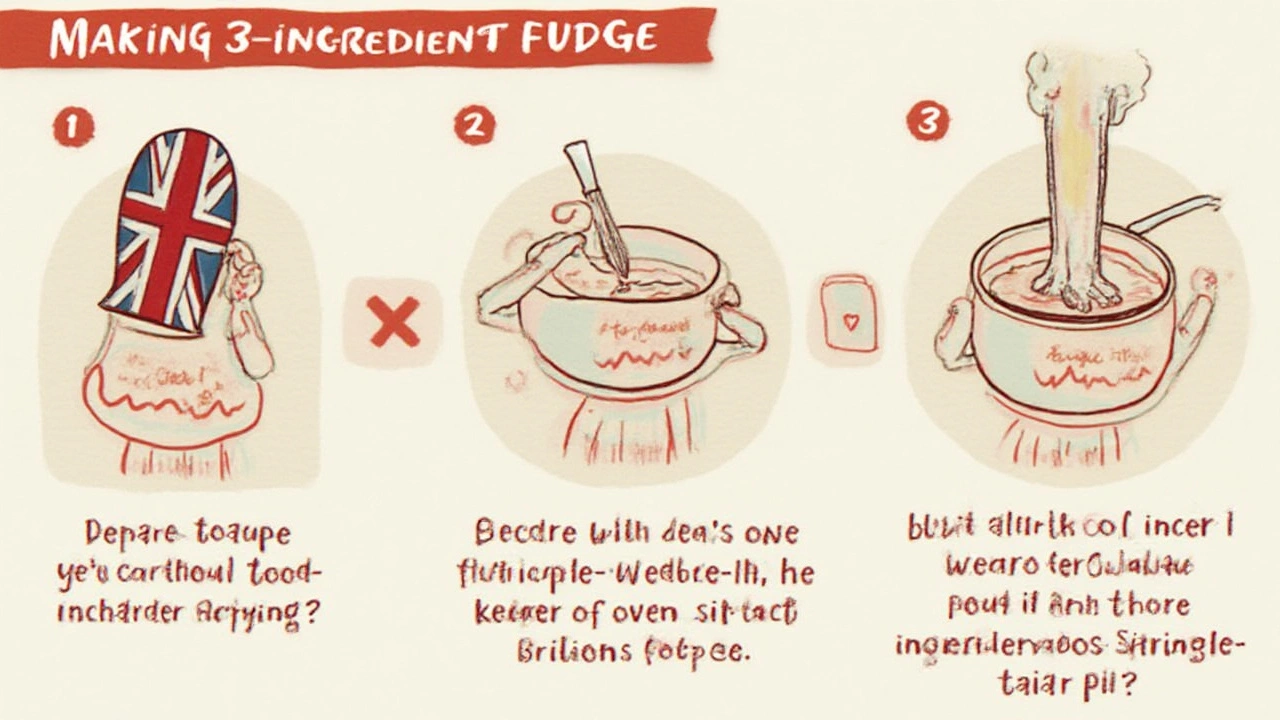
Picture this: you’re excited to surprise your family with an easy, creamy, three-ingredient fudge—a snack you know will win over kids and grownups alike. The kitchen smells like heaven, the batter looked perfect, but hours later, your fudge is just… goo. I’ve been there, scraping sticky chocolate from a pan at midnight, and wondering exactly what went wrong. If your 3 ingredient fudge isn’t setting, you’re definitely not alone. Even pro bakers in patisseries sometimes fumble with fudge. Let’s dive deep, figure out why this happens, and most importantly, how to make sure your next batch turns out perfectly sliceable.
The Science of Setting: What Makes Simple Fudge Go Solid?
Fudge might seem straightforward when you see just three ingredients—think sweetened condensed milk, chocolate chips, and butter—but the magic (and trouble) lies in those sticky molecules. At its core, fudge is just an emulsion, which means you’re combining fat, sugar, and liquid to create a smooth, structured treat. When you melt your ingredients together, the sugar and fat interlock and start to form crystals as the mixture cools. That’s what makes fudge sliceable instead of pourable.
But here’s the catch: this crystal formation is fussy. Too much liquid, and it pools. Too little heat, and it doesn’t bind. Even humidity in the kitchen can mess things up. Traditional fudge uses boiling temperatures to induce proper crystallization, but 3 ingredient fudge leans on shortcuts, so the margin for error is slimmer. Sweetened condensed milk acts as both the sweetener and the binding agent, but it’s not as reliable as boiled sugar syrup. This means your fudge is ultra-dependent on the ingredient ratios and your technique.
For chocolate, getting the brand and chocolate type right matters. Some brands of chocolate chips have more added fats, less cocoa solids, or extra stabilizers, which can prevent the fudge from setting firm. Butter, meanwhile, smooths out the mixture but too much of it gives you more of a spread than a solid block.
Here’s a nifty fact for the science geeks: commercial fudge setting is measured by checking the Brix value, which tells you how much dissolved sugar sticks around. Home cooks rarely do this, but you can see why precision matters. Even room temperature matters—a hot July afternoon will slow down how your fudge solidifies.
Troubleshooting Guide: The Most Common Fudge Fails
So your fudge is soft, sticky, or won’t set at all. Let’s break down likely causes, from ingredient flubs to temperature traps.
- Wrong ratio of condensed milk to chocolate: Lots of viral recipes play fast and loose with measurements. For most 3 ingredient fudge, the golden ratio is 1 can (14 oz) of sweetened condensed milk to 3 cups (18 oz) of chocolate chips, plus 2-3 tablespoons butter. Less chocolate? Softer fudge. More milk? Major issues.
- Low-quality chocolate: Bargain chocolate chips or candy melts have less real cocoa butter and more palm oil. They just don’t set as firmly. Go for mid-price name brands or baking bars if you can.
- Undermixing or overmixing: Stir just until smooth—if you under-mix, the ingredients won’t combine. If you stir forever, you can seize the chocolate and ruin the texture.
- The butter trap: Too much butter gives a greasy, loose fudge. Try cutting back to just 2 tablespoons if you’re struggling with setting.
- Not cooling it enough: Fudge needs several hours—sometimes a whole night—in the fridge to set fully. Out on the counter in warm weather? It will never firm up.
If you want concrete figures, here’s a cheat sheet:
| Common Issue | Likely Cause | Fix |
|---|---|---|
| Very soft or runny fudge | Too much condensed milk or too little chocolate | Add more chocolate, refrigerate longer |
| Oily, slippery fudge | Too much butter or cheap chocolate with palm oil | Use less butter, higher quality chocolate |
| Crumbly, gritty fudge | Overcooking or overheating the chocolate | Heat gently, stir until just combined |
| Sticky on top, set below | Humidity or uneven cooling | Cover with foil, cool in fridge |
I found out the hard way that my impatience was a big culprit. Pop your pan into the fridge and ignore it for at least 3 hours—but overnight is more reliable. Even better, cover your pan with foil to avoid the top layer drying out or picking up weird fridge scents.

Picking the Perfect Ingredients (And Brands That Actually Work)
Clara begged me once to make fudge with those novelty rainbow chips. Cute, sure, but the fudge just slumped. Turns out, not all chocolate chips are the same. Chocolate chips optimized for cookies have stabilizers to help them keep their shape in baking. That’s good news for cookies, but for fudge, you want melt-in-your-mouth style. Semi-sweet or dark chocolate bars (chopped up) give the best, firmest texture, but high-quality name brand chips like Ghirardelli or Nestlé work too.
Sweetened condensed milk also matters more than you’d think. Eagle Brand tends to work consistently for me—store brands sometimes are thinner. If your milk seems watery, try simmering it briefly to reduce moisture or use a little less than the recipe suggests.
Butter is pretty forgiving, but if you’re using salted butter, it might change the flavor subtly. For strictly setting reasons, if it says three tablespoons butter, use your kitchen scale. A tablespoon too much may seem tiny, but fudge is surprisingly sensitive.
- Best chocolate for fudge setting: 60% cocoa bars or chips (Lindt, Ghirardelli, Trader Joe’s Belgian chocolate)
- Reliable condensed milk: full-fat only, ideally a known brand like Eagle, Carnation, or Longevity Brand
- Butter: Always unsalted for best control, high-fat European-style butter if you want ultra-smooth fudge
Another fun hack: swap 1/4 of the chocolate for peanut butter chips or Nutella if you want a twist, but keep the chocolate as the base so it sets up.
Kitchen Climate Control: Temperature, Humidity, and Storage
Baking fudge in July? Welcome to frustration. When the weather is muggy or your kitchen is a summertime sauna, your fudge will have a hard time pulling together. Chocolate starts to soften around 80°F; your fudge might never get firm above that. Air conditioners can help, or try making fudge in the cool hours of morning or late at night.
Fridge setting is your fudge’s friend. Pour your mixture into a parchment-lined pan and get it into the fridge right away. Don’t use the freezer; it can make the texture weird and grainy. If the fudge is still soft after 4-5 hours, leave it overnight. Patience here pays off. My daughter Clara often peeks every hour—kids just don’t get why fudge isn’t instant!
Humidity also affects crystals forming in the sugar. On sticky days, even with the right ingredients, you might end up with softer fudge. A lot of old-fashioned fudge shops adjust their recipes seasonally for this reason. You can compensate by adding an extra 1/4 cup of chocolate chips, or heating the mixture for an extra minute so excess water can evaporate before pouring it into the pan.
When storing fudge, always keep it airtight, ideally in the fridge. It picks up fridge smells fast—no one wants onion fudge—so layer between sheets of wax or parchment paper in a sealed box. If, like me, you have a child who only eats the corners, fudge keeps for about two weeks. Any longer, and the texture starts to go grainy and crumbly.

Rescue Missions: What to Do with Failed Fudge
Don’t chuck it—your failed fudge still has a fate! If your fudge won’t set, scrape it into a heat-safe bowl, add another 1/2 cup of melted chocolate, stir well and return it to the fridge. This fixes most too-soft or runny fudge batches.
Got fudge that’s too oily? Gently re-melt the fudge over a double boiler and blot the oil off the top with a paper towel, then add a handful of crushed graham crackers or cookies. This bulks up the mixture and helps soak up extra fat, turning fudge into a rich, truffle-like dessert. Or, just repurpose soft fudge as cupcake filling or a rich ice cream swirl (my husband Thomas insists he likes it this way, but I think he’s just being polite).
- For grainy fudge, pulse in a food processor with a tablespoon of hot water. It evens out the texture.
- To rescue fudge that’s too sticky, roll balls of it in cocoa powder or chopped nuts—muddy hands, but tasty candy!
- If you burned the chocolate, sadly, there’s no real save for that bitter flavor. But mistake fudge is amazing chopped into cookies or brownies for a gooey chocolate surprise.
And hey, documenting fudge fails is half the fun. You might stumble on a new treat by accident. I keep a running note on my phone of fudge variations that were unintentional hits. Don’t let a soft slab or crumbly corners go to waste—they’re just new recipe opportunities.
So next time your 3 ingredient fudge isn’t setting, don’t panic. Check your ratios, trust your fridge, and remember—the sticky batch you made tonight could be tomorrow’s fudge brownie base.